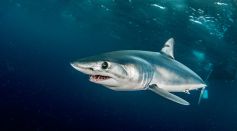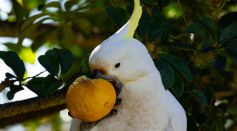ENVIRONMENT & CLIMATE

Animals Disguising Themselves As Inanimate Objects Is a Better Camouflage Than Just Blending in the Background

3-Legged Alligator Spotted Tenderly Caring for Her Young Showing That Crocodiles Are Misunderstood Reptiles
Scientists Decipher Through Machine Learning that Dogs Build Stronger Connections with Motion than with Humans Who Do the Actions

Newly Discovered Extinct Lizard-like Species Lived 150 Million Years Ago Alongside Dinosaurs

Scary Dragon Skull Found On UK Beach [LOOK]

7ft Mako Shark Jumps Onto Fishing Boat After Struggling to Escape

Royal Beekeeper Announced to Queen's Bees The Death of The Monarch and Change of Ownership: Century-old Tradition 'Affects' Honey Production

Queen Nefertiti's Mummy To Be Revealed In Upcoming Month or Two, Egyptologist Says
Fossilized Vomit Found in Utah Dates to the Jurassic Period

Queen Elizabeth II Rides Off The Sunset: Cloud Formation Resembles Young Queen Riding a Horse

Bill Gates Supports Climate-Smart Magic Seeds to Fight Global Hunger

Mako Shark Sighted Near Brazilian Coast Leaves Beach Goers In Shock

Sydney's Trash Wars: Cockatoos Opening Bins and Human Counter-Bin Measures Locked In 'Arms Race' Over Rubbish

Pet Kangaroo 'Violently' Mauled Pensioner Owner to Death Which Then Attacked Paramedics
Most Popular

Starlink Satellite Explodes in Orbit; SpaceX Confirms It'll Re-Enter Earth

Aurora Phenomenon: How Geomagnetic Storms and Space Weather Are Lighting Up the World

What Causes Monsoons? How Seasonal Winds Shifts and Climate Patterns Drive Rainfall

How Wildfires Start, Spread, and Ignite: Understanding the Causes and Fire Behavior Clearly





